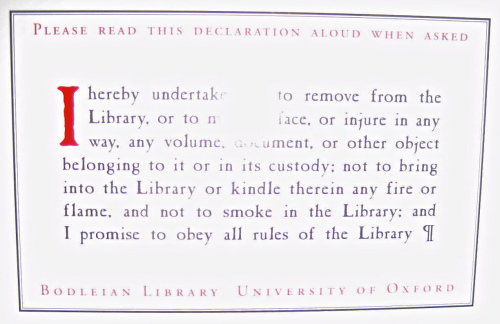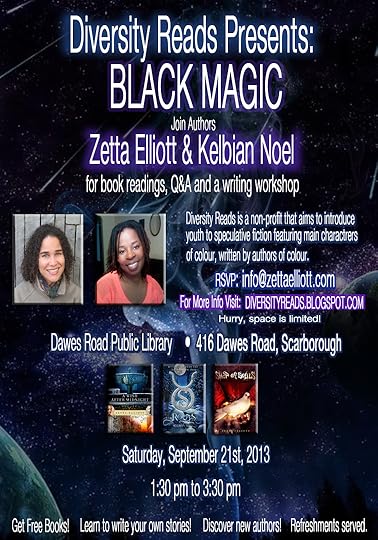Zetta Elliott's Blog, page 62
November 11, 2013
meet Nyla
November 10, 2013
“Brink of Eternity”
 Even though I’ve started sending out ARCs, I’m still working on the conclusion to The Deep. When I asked a Bangladeshi friend for assistance, she suggested I include some poetry by Rabindranath Tagore. I’ve been reading some of his beautiful poetry this morning and think I’ve settled on “Brink of Eternity.”
Even though I’ve started sending out ARCs, I’m still working on the conclusion to The Deep. When I asked a Bangladeshi friend for assistance, she suggested I include some poetry by Rabindranath Tagore. I’ve been reading some of his beautiful poetry this morning and think I’ve settled on “Brink of Eternity.”
In desperate hope I go and search for her
in all the corners of my room;
I find her not.
My house is small
and what once has gone from it can never be regained.
But infinite is thy mansion, my lord,
and seeking her I have to come to thy door.
I stand under the golden canopy of thine evening sky
and I lift my eager eyes to thy face.
I have come to the brink of eternity from which nothing can vanish
—no hope, no happiness, no vision of a face seen through tears.
Oh, dip my emptied life into that ocean,
plunge it into the deepest fullness.
Let me for once feel that lost sweet touch
in the allness of the universe.
This poem fits perfectly, though I’m wondering if it’s accurate to have two Bangladeshi-Senegalese teens reciting this in English…
I’m listening to the CBC this morning. Not sure why—I don’t feel particularly homesick for Canada. Maybe this scene from The Deep has me thinking about my own hybridity. After tomorrow I’ll have to take the poppy off my lapel and return it to its spot on my bulletin board until November rolls around again…


November 8, 2013
wading into The Deep
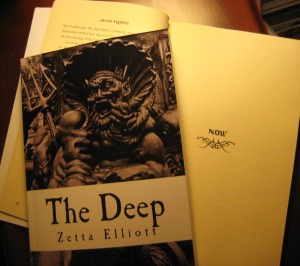 This week I sent out my first ARC of The Deep! No one knows YA fantasy like The Book Smugglers, and I confess I was a little nervous letting this novel out into the world. The cover isn’t done yet so I’ve got this temporary template cover that shows Neptune from the fountain in Grand Army Plaza. Nadirah Iman is working on the trailer, which is exciting since she did such a great job with the trailer for Bird. I’ve got some school visits lined up so I’ll soon have a chance to test it out on teen readers. In the meantime I’m working on the back cover blurb. Here’s what I’ve got so far:
This week I sent out my first ARC of The Deep! No one knows YA fantasy like The Book Smugglers, and I confess I was a little nervous letting this novel out into the world. The cover isn’t done yet so I’ve got this temporary template cover that shows Neptune from the fountain in Grand Army Plaza. Nadirah Iman is working on the trailer, which is exciting since she did such a great job with the trailer for Bird. I’ve got some school visits lined up so I’ll soon have a chance to test it out on teen readers. In the meantime I’m working on the back cover blurb. Here’s what I’ve got so far:
THE DEEP plunges readers into a dangerous, underground world policed by members of The League, a secret group of women and men who use their intuitive abilities to detect energy surges far below the earth’s surface. In the deep, ancient sources of malevolent energy are bubbling up through the bedrock, and only members of The League know how to detect and seal the leaks that allow evil to enter the world.
Nyla Evans knows nothing about the war being waged beneath the city. It has been almost a year since she moved from Ramstein Air Base in Germany to Brooklyn, and Nyla is still searching for a way to belong. It doesn’t help that she has started to hallucinate while walking the city streets, but things get even stranger when a man named Osiris approaches her and offers to introduce Nyla to others who have similar “gifts.” When Nyla refuses, her friend D is kidnapped and held in the deep until Nyla agrees to let Osiris guide her underground. There, miles beneath Brooklyn, Nyla meets Lada—the mother who abandoned her a decade ago.
Furious that Nyla is being recruited by The League, Lada tries to prevent her daughter from following in her footsteps. But Nyla feels at home in the deep and her training begins at an accelerated pace when The League discovers an earthquake will soon hit Brooklyn, releasing unprecedented levels of malevolent energy into the city.


November 1, 2013
2013 Golden Baobab Prize
 When I attended the Yari Yari Ntoaso conference in Accra last spring, I met Deborah Ahenkorah, founder of Golden Baobab. Deborah asked me to serve as a judge on the picture book panel and after weeks of deliberations, we are proud to announce the shortlists for all three categories. Below is the official press release:
When I attended the Yari Yari Ntoaso conference in Accra last spring, I met Deborah Ahenkorah, founder of Golden Baobab. Deborah asked me to serve as a judge on the picture book panel and after weeks of deliberations, we are proud to announce the shortlists for all three categories. Below is the official press release:
Golden Baobab Prizes Shortlist 2013
Accra, Ghana, November 1, 2013: 180 stories were submitted to this year’s Golden Baobab Prizes. Of these, 25 made it onto the longlist and 8 to the shortlist. The 8 shortlisted stories are:
The Golden Baobab Prize for Picture Books
The Princess with a Golden Voice – Philip Begho (Nigeria)
The Little Hippo – Liza Esterhuyse (South Africa)
Grandma Mimo’s Breakfast – Carol Gachiengo (Kenya)
The Golden Baobab Prize for Early Chapter Books
Seven – Sabina Mutangadura (Zimbabwe)
Rhino – Richard Street (South Africa)
What’s going on at 179 Jabulani Street? – Karen Hurt (South Africa)
The Golden Baobab Prize for Rising Writers
The Little Secret – Fego Martins Ahia (Nigeria)
Pieces of Africa – Kanengo Rebecca Diallo (Tanzania)
Chair of judges for the Picture Book Prize, Zetta Elliott, whose first picture book, Bird, won the Honor Award in Lee and Low Books’ New Voices Contest, commented on the shortlist saying, “I’m very impressed with the range and originality of the stories. This year’s shortlist suggests that there are plenty of emerging authors who take seriously the task of nourishing the imagination of African children. These stories have magic, mystery, and important lessons about the value of community. They confirm what we already know: Africa’s literary landscape is rich and diverse!”
The Golden Baobab Prizes, now in its fifth year, were set up to find the very best writers of African children’s literature. This year’s shortlist suggests that the judges; Bernardine Evaristo, Esi-Sutherland-Addy, Nonikiwe Mashologu, Zetta Elliott, Annette Hansen and Osayimwense Osa, all have varying ideas about what constitutes good fiction for children. This has ensured a very diverse 2013 shortlist.
Osayimwense Osa, founding author of the Journal of African Children’s and Youth Literature (JACYL), is a firm believer in the power of literature. He says, “It transform the world from confusion and violence to peace is immense and so it is wise to get children reading in their formative years. They must have access to literature which is in touch with social functions, individual lives, and world realities and some of the stories in the shortlist do just that.”
The shortlist comes out after over 8 weeks of the rigorous Golden Baobab Prizes evaluation process. It is evident that African writers are passionate about creating beautiful stories to ignite the imaginations of African children everywhere. The winners of the 2013 prizes will be announced on 13 November.


October 28, 2013
parting thoughts
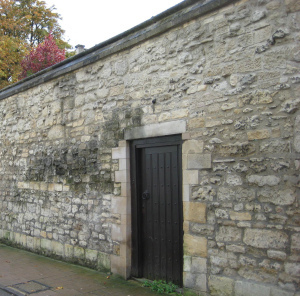 I’m trying to stay up long enough to watch Medieval Dead on the Yesterday channel. I’m catching the 7:20 bus to London tomorrow morning so I can have breakfast with my friend Mary before heading to Heathrow to catch my flight back to NYC. I need to write but instead I’ve been watching WAY too much TV. Got a good night’s rest finally, and spent the day picking up souvenirs, touring the Bodleian, grappling with the *two* Huggins cases (yes, TWO–apparently I’ve been reading the past wrong), and searching for the college by the river where a certain episode of Inspector Lewis was filmed. I should have asked that question during my walking tour on Saturday but I was too pleased with myself for recognizing sites in Oxford that even the guide didn’t know about. When I think about living in the UK I often wonder whether I would be able to build as diverse a community as I enjoy in the US. There was one other American on the Morse walking tour—a white woman with a Southern accent who clearly knew a lot about the shows. I was one of two people of color on the tour (there was an Asian woman with her white husband) and I think I was also the youngest, so I didn’t really plan to mingle. But midway through the tour I asked where the other American woman was from (North Carolina) and within 30 seconds—I’m not kidding—we were talking about race. And it was SUCH a relief! I needed someone else to acknowledge that Oxford is mighty white…even on an elite US campus like Harvard, I think I’d see a lot more people of color than I’ve seen in the few days I’ve spent here. One black man made direct eye contact with me on High Street yesterday. One. The black women, when they look at me at all, immediately look away. It reminds me of Toronto and how I’m always counting the black people I see in the street and hoping for some kind of connection. I think if I lived here I’d have to learn to bite my tongue a lot. Or maybe I’d find a community of people who are willing to analyze race with every breath they take.
I’m trying to stay up long enough to watch Medieval Dead on the Yesterday channel. I’m catching the 7:20 bus to London tomorrow morning so I can have breakfast with my friend Mary before heading to Heathrow to catch my flight back to NYC. I need to write but instead I’ve been watching WAY too much TV. Got a good night’s rest finally, and spent the day picking up souvenirs, touring the Bodleian, grappling with the *two* Huggins cases (yes, TWO–apparently I’ve been reading the past wrong), and searching for the college by the river where a certain episode of Inspector Lewis was filmed. I should have asked that question during my walking tour on Saturday but I was too pleased with myself for recognizing sites in Oxford that even the guide didn’t know about. When I think about living in the UK I often wonder whether I would be able to build as diverse a community as I enjoy in the US. There was one other American on the Morse walking tour—a white woman with a Southern accent who clearly knew a lot about the shows. I was one of two people of color on the tour (there was an Asian woman with her white husband) and I think I was also the youngest, so I didn’t really plan to mingle. But midway through the tour I asked where the other American woman was from (North Carolina) and within 30 seconds—I’m not kidding—we were talking about race. And it was SUCH a relief! I needed someone else to acknowledge that Oxford is mighty white…even on an elite US campus like Harvard, I think I’d see a lot more people of color than I’ve seen in the few days I’ve spent here. One black man made direct eye contact with me on High Street yesterday. One. The black women, when they look at me at all, immediately look away. It reminds me of Toronto and how I’m always counting the black people I see in the street and hoping for some kind of connection. I think if I lived here I’d have to learn to bite my tongue a lot. Or maybe I’d find a community of people who are willing to analyze race with every breath they take.
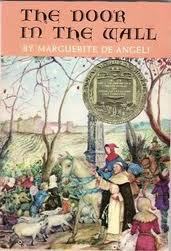 Jane Suzanne Carroll’s talk last Friday was so interesting and so timely for me. She talked about how fictional characters in the fantasy novels of Susan Cooper often reveal their knowledge of history through weather events and/or landmarks. My question at the end had to do with race, of course, because in the US, people of color have often been written out of the official historical record and the novelist can then use the landscape to reassert that presence. That’s what I think I’m doing, anyway, when I write about Weeksville or the African Burial Ground in lower Manhattan. My question to Jane, which came out a bit jumbled, was whether she or anyone else had considered the way these fictional characters with their knowledge of the land might enhance a white child reader’s sense of belonging—and conversely leave a child of color here in England with a diminished claim to belonging and/or citizenship (“You’re not really British; you just got here yesterday”). I don’t know enough about kids of color here—do they identify as British in those moments and so claim the Anglo-Saxon history as their own? What does the landscape and a knowledge of its history do to/for them? Are there novels that write children of color into Britain’s past? (maybe Sarwat Chadda?) Or is that just me searching once again for a door in the wall?
Jane Suzanne Carroll’s talk last Friday was so interesting and so timely for me. She talked about how fictional characters in the fantasy novels of Susan Cooper often reveal their knowledge of history through weather events and/or landmarks. My question at the end had to do with race, of course, because in the US, people of color have often been written out of the official historical record and the novelist can then use the landscape to reassert that presence. That’s what I think I’m doing, anyway, when I write about Weeksville or the African Burial Ground in lower Manhattan. My question to Jane, which came out a bit jumbled, was whether she or anyone else had considered the way these fictional characters with their knowledge of the land might enhance a white child reader’s sense of belonging—and conversely leave a child of color here in England with a diminished claim to belonging and/or citizenship (“You’re not really British; you just got here yesterday”). I don’t know enough about kids of color here—do they identify as British in those moments and so claim the Anglo-Saxon history as their own? What does the landscape and a knowledge of its history do to/for them? Are there novels that write children of color into Britain’s past? (maybe Sarwat Chadda?) Or is that just me searching once again for a door in the wall?
I’m so glad Jane’s talk came at the start of my visit to Oxford. I’ve spent days thinking about how we (PoC) see ourselves in the landscape. Perhaps through our consumption of texts like Inspector Lewis and The Door in the Wall. Have I, as a Commonwealth writer, mapped an alternate England in my mind? That would explain the jarring feeling upon arriving in the actual country filled with actual people and multiple histories. Nick Swarbrick told me there are disputes over which county in England has the “purest claim” on faeries! I think white Britons in my mind were an undifferentiated group for a long time. I’m sure these ideas will find their way into my talk for the Canada Seminar at Harvard next February. Alison Waller’s talk helped to validate my fascination with the formative texts I read as a child in Canada; on one of her accompanying slides she included a quote from Proust in which he describes his memory of reading a favorite book from childhood, and he describes the book as loving him back—which is how we feel, isn’t it? We love a book when we’re children and we assume it loves us back—the feeling must be reciprocal! The day after Alison’s talk I had lunch with her and Roni Natov, a legend in the field of children’s literature. We talked about our favorite books from childhood and how important it can be to revisit those texts even with the knowledge that the experience will not be the same. For me, it has been somewhat traumatic to realize that the books I loved as a child never loved me—my brown-skinned, pudgy, Afro-ed self. In fact, most of those books held me in contempt, which is to say their authors never intended to address me and had little if any concern for my particular reading experience. Yet in some ways, I have remained loyal to them, which makes me think of battered woman syndrome and dream hampton’s comment in Beyond Beats & Rhymes: “Your home is hip hop and your man beats you.” Yet many women—and feminists—can’t seem to let go of rap music. Jacqueline Bobo would argue that black women (as “cultural readers”) have learned to negotiate with problematic texts so that they can extract value despite glaring stereotypes. Maybe that’s what I have done/can do…
I’m nodding off. Can’t afford to sleep in tomorrow. Maybe the pub crawlers will keep me up again. I’ve managed to catch one and a half episodes of Time Team since I’ve been here but will NOT watch it again tonight when it comes on at 11pm. Time to prepare for my own journey back through time. Back to Brooklyn. Back to work…


October 27, 2013
a door in the wall
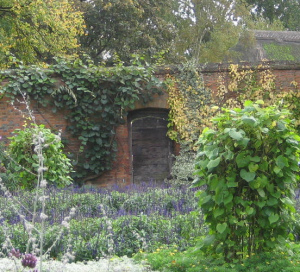 After I finished blogging this morning I emailed a friend from the 5th grade to see if she could remember the title of the novel we read in Mrs. Wistow’s class. Then I went to see the Magic Books exhibit at the Bodleian and then I went on a long walk around Oxford. And everywhere I went, I saw ancient walls and in every wall there was a door. Tonight I sat down to blog and as soon as I chose a title for this post, I went over to Google and searched for “children’s medieval novels.” And what do you think came up? The Door in the Wall by Marguerite de Angeli. I’m almost positive that’s the novel we read in the 5th grade! Wikipedia supplied this useful quote: “If thou followeth a wall far enough, there must be a door in it.” Which only stirs that same mix of bliss and shame…why search for a door when they built the wall to keep me out? Why doesn’t my understanding of their intent to exclude diminish the value of whatever lies within the walls?
After I finished blogging this morning I emailed a friend from the 5th grade to see if she could remember the title of the novel we read in Mrs. Wistow’s class. Then I went to see the Magic Books exhibit at the Bodleian and then I went on a long walk around Oxford. And everywhere I went, I saw ancient walls and in every wall there was a door. Tonight I sat down to blog and as soon as I chose a title for this post, I went over to Google and searched for “children’s medieval novels.” And what do you think came up? The Door in the Wall by Marguerite de Angeli. I’m almost positive that’s the novel we read in the 5th grade! Wikipedia supplied this useful quote: “If thou followeth a wall far enough, there must be a door in it.” Which only stirs that same mix of bliss and shame…why search for a door when they built the wall to keep me out? Why doesn’t my understanding of their intent to exclude diminish the value of whatever lies within the walls?
Last week I had a chance to hear Alison Waller give a talk at Hunter College on her latest research project about how adults recall and re-read childhood books. I met Alison at Roehampton University in 2008 when I presented at their Children’s Literature and the Environment conference. In my paper I discussed The Secret Garden as a book I have revisited often since childhood. A few days later I completed final revisions (fingers crossed) on my Jeunesse article and one of the sources I added was A Narrative Compass: Stories that Guide Women’s Lives. In that essay I focus on the fantasy novels of Ruth Chew, which I discovered around the same time we moved from Pickering to Scarborough. The Magic Cave stayed with me for years—a summer storm tears apart an old tree and Merlin is discovered inside by two children who had been playing in Brooklyn’s Prospect Park. I realize it must seem incredibly self-indulgent to continuously examine the books I loved as a child, but there is value in this type of reflection:
In their anthology A Narrative Compass: Stories that Guide Women’s Lives, Roberta Seelinger Trites and Betsy Hearne ask women scholars to identify “one story as a particularly valuable source of inspiration” (xi), a project worth undertaking since it enables academics to “understand the relationship between text and context, between the subject they study and their own lives,” thereby enabling them to “draw on their internalized knowledge of storytelling to help analyze what they study” (xiv). In a way I am indebted to Ruth Chew for planting within me a seed that would eventually blossom into a deep and lasting love for Brooklyn, urban parks, and the power of everyday magic that can be conveyed so effectively through children’s literature. As a child reader I was enchanted by The Magic Cave, and if I am no longer enamored with the novel, that does not necessarily diminish the impact Chew’s narrative has had on my imaginative and intellectual writing. Trites and Hearne argue that “Self-aware storytelling is an interdependent methodology: Narratives rely on other narratives for their creation even while they generate more narratives in their telling” (xvi). My critique of Chew’s novels stems not from a desire to condemn, but rather to reconcile the dreamer I once was (and still am) with the black feminist critic I have become. The story I tell of my evolution as a scholar and speculative fiction writer may impact contemporary fantasy writers as they craft their tales as well as critics who choose to analyze this rapidly expanding body of work.
I keep saying I’m done with academic essays but I feel one percolating in my mind right now. On Friday I attended a talk organized by Cara Bartels-Bland, convener of the Children’s Literature Oxford Colloquium. I reached Oxford just after noon and managed to find my hotel without much trouble. The talk was at 4pm so I went to the visitor center and bought a map. I managed to find St. Cross College but couldn’t figure out how to open the ancient-looking door! A man came up who also planned to attend the talk and we tried to figure out how to enter the building. “I’m Nick Swarbrick,” he said and I immediately recognized his name because I also cite him in my Jeunesse essay! I told him as much and so we chatted before and after Jane Suzanne Carroll’s fantastic talk, “Landscape History for Imagined Worlds.” Jane and Nick both gave me a lot to think about but I’ll save that for tomorrow. I haven’t slept through the night yet and want to see if this fierce storm can lull me to sleep (and keep the pub crawlers at home)…


something about a wall
 There’s frost on the window. Yesterday I went to a sweater shop in the covered market here in Oxford and asked the owner if locals find this windy weather cold. I’d been shivering all day but noticed plenty of people walking around without a coat—one student even wore shorts and flip flops. “It’s been unseasonably warm,” she told me and then added, “We’re bracing for the storm.” I turned on BBC News once I got back to my hotel and sure enough—”hurricane force winds and heavy rain” are predicted for later today. I bring bad weather with me wherever I go! Or hurricanes follow me: Ivan, Katrina, Sandy. Right now it’s sunny and there are blue skies overhead. I’ve been sleeping at odd hours—crashed yesterday after taking two two-hour walking tours to get acquainted with the city and its history. I don’t know what people do at night here in Oxford but there are some loud parties and/or pub crawls near my hotel that last until dawn. Hopefully the storm will keep things quiet tonight.
There’s frost on the window. Yesterday I went to a sweater shop in the covered market here in Oxford and asked the owner if locals find this windy weather cold. I’d been shivering all day but noticed plenty of people walking around without a coat—one student even wore shorts and flip flops. “It’s been unseasonably warm,” she told me and then added, “We’re bracing for the storm.” I turned on BBC News once I got back to my hotel and sure enough—”hurricane force winds and heavy rain” are predicted for later today. I bring bad weather with me wherever I go! Or hurricanes follow me: Ivan, Katrina, Sandy. Right now it’s sunny and there are blue skies overhead. I’ve been sleeping at odd hours—crashed yesterday after taking two two-hour walking tours to get acquainted with the city and its history. I don’t know what people do at night here in Oxford but there are some loud parties and/or pub crawls near my hotel that last until dawn. Hopefully the storm will keep things quiet tonight.
I had all kinds of ideas for a blog post yesterday but didn’t feel like writing when I got back to the hotel. Yesterday was my birthday and, as is my custom, I spent it on my own. I wasn’t alone necessarily but I was unknown and that’s the best part of travel: anonymity. There were plenty of other foreigners on the first tour; our guide had us share our country of origin and I was the only American in the group (I said I was from NYC to keep things simple). Others were from India, Pakistan, Colombia, Finland, and Australia. Every so often the guide would stop to tell us some interesting fact about Oxford’s 38 colleges, and she would look at me or the Indian tourists and say, “Well, in 1208 no one here even knew about America or India.” Which prompted me to start keeping a mental chronology. When did the English first travel to Africa? To Nevis? To Canada? What were “those  assholes” doing in 1713? Because that’s how I divide the Brits in my mind. There are the lovely people living their quaint, lovely lives in England and then there are “those assholes” who bought and sold enslaved Africans and transported them to the Americas. I tend to think of my personal history starting at that point and it was something of a relief to come back to the hotel last night and watch an episode of Who Do You Think You Are featuring Hugh Quarshie, a Black British actor whose Dutch great-great-grandfather had married an African vendor (right) and left property to his mixed-race children. There are no simple divisions in reality—I do know that. But it’s not always easy to reconcile the warring impulses within. Being in England stirs an awkward blend of bliss and shame. I feel at ease because so much of the culture is familiar, yet I also feel enraged and excluded and invisible. As we walked around the city yesterday morning I kept feeling the urge to photograph the old medieval walls. There’s something about a wall that’s alluring even as—or perhaps because—it shuts me out.
assholes” doing in 1713? Because that’s how I divide the Brits in my mind. There are the lovely people living their quaint, lovely lives in England and then there are “those assholes” who bought and sold enslaved Africans and transported them to the Americas. I tend to think of my personal history starting at that point and it was something of a relief to come back to the hotel last night and watch an episode of Who Do You Think You Are featuring Hugh Quarshie, a Black British actor whose Dutch great-great-grandfather had married an African vendor (right) and left property to his mixed-race children. There are no simple divisions in reality—I do know that. But it’s not always easy to reconcile the warring impulses within. Being in England stirs an awkward blend of bliss and shame. I feel at ease because so much of the culture is familiar, yet I also feel enraged and excluded and invisible. As we walked around the city yesterday morning I kept feeling the urge to photograph the old medieval walls. There’s something about a wall that’s alluring even as—or perhaps because—it shuts me out.  And that’s how exclusivity works, right? You have to believe that what lies on the other side of the wall is better than the space you currently occupy. And it’s that belief that drives you to search for an opening, a door in the wall. I’ve been a medieval geek for a long time. I think it started in the 5th grade when Mrs. Wistow introduced us to a novel about a boy living in a walled city as the plague swept across Europe. We also learned to sing “Scarborough Fair.” That year was pivotal for me—we also watched a BBC adaptation of E. Nesbit’s The Phoenix and the Carpet, which made a lasting impression on me. That was my first year at that school; my parents had divorced, we moved out of my spacious childhood home and into a townhouse in the adjacent city of Scarborough, and I entered a new school where I was not recognized as a gifted student. Maybe that was my first wall. I encountered other forms of racism at that school, so perhaps I tried that much harder to fit in. Or maybe I would have loved medieval history no matter what.
And that’s how exclusivity works, right? You have to believe that what lies on the other side of the wall is better than the space you currently occupy. And it’s that belief that drives you to search for an opening, a door in the wall. I’ve been a medieval geek for a long time. I think it started in the 5th grade when Mrs. Wistow introduced us to a novel about a boy living in a walled city as the plague swept across Europe. We also learned to sing “Scarborough Fair.” That year was pivotal for me—we also watched a BBC adaptation of E. Nesbit’s The Phoenix and the Carpet, which made a lasting impression on me. That was my first year at that school; my parents had divorced, we moved out of my spacious childhood home and into a townhouse in the adjacent city of Scarborough, and I entered a new school where I was not recognized as a gifted student. Maybe that was my first wall. I encountered other forms of racism at that school, so perhaps I tried that much harder to fit in. Or maybe I would have loved medieval history no matter what.
Time to venture out to forage for food. Will bundle up and face the cold sunshine…


October 8, 2013
a door of my own
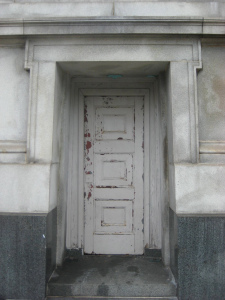 This month is becoming a bit too intense, which is what happens when I try to do too many things at once. The self-publication of The Deep is moving forward, which means I’ve been communicating with designers and illustrators and filmmakers (for the trailer). I’ve been looking around for people to help me fact check some things in the novel, and have been really lucky that my friends and colleagues are willing to lend a hand. Yesterday another friend told me about a fellowship that’s perfect for me—but the deadline is November 1. Can I grade three sets of papers, judge an African children’s literature competition, teach my three classes, coordinate the publication of my novel, present in two friends’ classes, conduct research in the UK, AND get this application done? It’s daunting.
This month is becoming a bit too intense, which is what happens when I try to do too many things at once. The self-publication of The Deep is moving forward, which means I’ve been communicating with designers and illustrators and filmmakers (for the trailer). I’ve been looking around for people to help me fact check some things in the novel, and have been really lucky that my friends and colleagues are willing to lend a hand. Yesterday another friend told me about a fellowship that’s perfect for me—but the deadline is November 1. Can I grade three sets of papers, judge an African children’s literature competition, teach my three classes, coordinate the publication of my novel, present in two friends’ classes, conduct research in the UK, AND get this application done? It’s daunting.
Still, last weekend I took my camera up to Grand Army Plaza and snapped some shots for the book trailer. I finally have a door of my own! This one is on the outside of the triumphal arch at Grand Army Plaza. After reading magical books as a child and wishing I could find my own portal to another world, I’ve written a book about a black girl who does just that! I’ve got about ten beta readers looking at the novel. I hope they find it as compelling to read as it was to write…
This morning I got an email from the Carl Brandon Society list. I knew John Jennings had made up this graphic because he posted it on Facebook a while ago. But apparently you can now buy a number of items from this site. Not sure how I feel about being on this list. Not sure I belong…
Whenever I feel this stressed out, I wish I really did have a door that I could slip through and disappear for a while…


September 25, 2013
a tale of two cities
 Brooklyn is my heart. I moved here in 1994, which means I have lived in the US for almost two decades! I’ve moved around a bit, spending a couple of years in Ohio, and a year in both Louisiana and Massachusetts. But I always return to Brooklyn because this was the first place where I felt I truly belonged. I still go back to Canada to see family and friends, but those trips have often been fraught with anxiety, painful memories, and pressure to slip back into roles I rejected years ago. These days, I return to Toronto on something of a mission: I want to create change within the children’s literature community. That means connecting with educators, parents, young readers, and gatekeepers within the arts community—not an easy task! But this past weekend I went to Toronto and managed to achieve ALL of my goals. I arrived at noon on Friday and spent the afternoon catching up with my cousin Bethany. We talked about the challenge of teaching at a community college and our chances of building a future outside of the academy. Then, for the first time, I checked into a hotel and spent the rest of the day on my own. After a nap I went out into the city and walked around, counting—as I always do—the number of black people I saw on the street. I wouldn’t do that in Brooklyn because
Brooklyn is my heart. I moved here in 1994, which means I have lived in the US for almost two decades! I’ve moved around a bit, spending a couple of years in Ohio, and a year in both Louisiana and Massachusetts. But I always return to Brooklyn because this was the first place where I felt I truly belonged. I still go back to Canada to see family and friends, but those trips have often been fraught with anxiety, painful memories, and pressure to slip back into roles I rejected years ago. These days, I return to Toronto on something of a mission: I want to create change within the children’s literature community. That means connecting with educators, parents, young readers, and gatekeepers within the arts community—not an easy task! But this past weekend I went to Toronto and managed to achieve ALL of my goals. I arrived at noon on Friday and spent the afternoon catching up with my cousin Bethany. We talked about the challenge of teaching at a community college and our chances of building a future outside of the academy. Then, for the first time, I checked into a hotel and spent the rest of the day on my own. After a nap I went out into the city and walked around, counting—as I always do—the number of black people I saw on the street. I wouldn’t do that in Brooklyn because  there are too many of us to count, but in Toronto I always feel outnumbered, invisible, and irrelevant. The next day, however, I was on a high after meeting some wonderful young writers at the Dawes Road Library in East York. Toronto is somewhat like NYC; we don’t have boroughs, but there are lots of smaller cities that combined to form the Greater Toronto Area or GTA. That would be fine except that the GTA has one of THE worst public transit systems EVER. It poured all day on Saturday, but that didn’t dampen my spirits; my cousin Beverley took me out for breakfast and then kindly offered to accompany me to the afternoon workshop—and I appreciated the help because I wouldn’t have made it there alone with a heavy bag full of books to give away plus juice boxes and snacks for the participants. We got the train, transferred to a second train, and then caught the bus out to the library. I took public transit a LOT last weekend, and it was good for me—as much as I complained, I still got where I needed to go and I didn’t have to rely entirely on my very kind cousin who always offers to chauffeur me around town. The “Black Magic” workshop was a lot of fun; our participants were a bit younger than expected, but they still had plenty of creative ideas and we answered lots of questions about our writing process and the challenges of getting published. Kelbian Noel (above, far right) was a fantastic co-host and helped me feel more at ease. I do loads of author talks and writing workshops here in the US but I’ve only done a handful in the GTA and that made me nervous. I’m hoping we can collaborate on other events in the future. It was gratifying to see young Canadians so excited about our books!
there are too many of us to count, but in Toronto I always feel outnumbered, invisible, and irrelevant. The next day, however, I was on a high after meeting some wonderful young writers at the Dawes Road Library in East York. Toronto is somewhat like NYC; we don’t have boroughs, but there are lots of smaller cities that combined to form the Greater Toronto Area or GTA. That would be fine except that the GTA has one of THE worst public transit systems EVER. It poured all day on Saturday, but that didn’t dampen my spirits; my cousin Beverley took me out for breakfast and then kindly offered to accompany me to the afternoon workshop—and I appreciated the help because I wouldn’t have made it there alone with a heavy bag full of books to give away plus juice boxes and snacks for the participants. We got the train, transferred to a second train, and then caught the bus out to the library. I took public transit a LOT last weekend, and it was good for me—as much as I complained, I still got where I needed to go and I didn’t have to rely entirely on my very kind cousin who always offers to chauffeur me around town. The “Black Magic” workshop was a lot of fun; our participants were a bit younger than expected, but they still had plenty of creative ideas and we answered lots of questions about our writing process and the challenges of getting published. Kelbian Noel (above, far right) was a fantastic co-host and helped me feel more at ease. I do loads of author talks and writing workshops here in the US but I’ve only done a handful in the GTA and that made me nervous. I’m hoping we can collaborate on other events in the future. It was gratifying to see young Canadians so excited about our books!
 I don’t normally visit Canada in September; with the fall semester just getting underway, it’s not an ideal time to travel. But a few months ago I blogged about the Word on the Street festival in Toronto and that led to an email exchange with the festival director, which concluded with an offer of a VIP tour of the event. I had hoped we could present a “Black Magic” panel at the festival but accepted the tour instead and was delighted to meet Bhavna Chauhan, a WOTS board member and editor at Random House. For an hour we walked around Queen’s Park and discussed the challenge of creating equity within the Canadian publishing industry. At each tent we stopped and looked at the list of authors scheduled to present and at every tent the line-up was virtually all white (I noticed the mighty white graphic was altered to include at least one brown-skinned reader). That met my rather low expectations for the festival, but it was still really encouraging to meet an industry insider who was willing to talk honestly about her experiences. I spotted a couple of African Americans on the covers of books in the kids zone and Bhavna rightly pointed out that she never gets to see figures from South Asian history on display. I went to two or three booksellers and asked for books by Black Canadian authors—Mabel’s Fables had none on hand but Annick Press had Olive Senior’s Birthday Suit and I discovered a new adult novel (Two Women) by Kittitian-Canadian author Christene A. Brown at the Second Story Press booth. It was FREEZING in Toronto so after my tour ended I met up with Leonicka Valcius and we headed to a nearby Tim Horton’s to warm up for a while. Leonicka is another woman of color working in Canadian publishing; she blogs at Leonicka.com and just yesterday posted her important analysis of the TD Canadian Children’s Literature Award. Inspired by Malinda Lo’s consideration of the ALA’s BFYA, Leonicka broke down the award recipients by race and gender—not surprisingly, her results were disheartening…
I don’t normally visit Canada in September; with the fall semester just getting underway, it’s not an ideal time to travel. But a few months ago I blogged about the Word on the Street festival in Toronto and that led to an email exchange with the festival director, which concluded with an offer of a VIP tour of the event. I had hoped we could present a “Black Magic” panel at the festival but accepted the tour instead and was delighted to meet Bhavna Chauhan, a WOTS board member and editor at Random House. For an hour we walked around Queen’s Park and discussed the challenge of creating equity within the Canadian publishing industry. At each tent we stopped and looked at the list of authors scheduled to present and at every tent the line-up was virtually all white (I noticed the mighty white graphic was altered to include at least one brown-skinned reader). That met my rather low expectations for the festival, but it was still really encouraging to meet an industry insider who was willing to talk honestly about her experiences. I spotted a couple of African Americans on the covers of books in the kids zone and Bhavna rightly pointed out that she never gets to see figures from South Asian history on display. I went to two or three booksellers and asked for books by Black Canadian authors—Mabel’s Fables had none on hand but Annick Press had Olive Senior’s Birthday Suit and I discovered a new adult novel (Two Women) by Kittitian-Canadian author Christene A. Brown at the Second Story Press booth. It was FREEZING in Toronto so after my tour ended I met up with Leonicka Valcius and we headed to a nearby Tim Horton’s to warm up for a while. Leonicka is another woman of color working in Canadian publishing; she blogs at Leonicka.com and just yesterday posted her important analysis of the TD Canadian Children’s Literature Award. Inspired by Malinda Lo’s consideration of the ALA’s BFYA, Leonicka broke down the award recipients by race and gender—not surprisingly, her results were disheartening…
So how do we create change with the children’s literature community in Canada? The answer might be: go around the gatekeepers. On Monday I visited my cousin Beverley’s high school out in Etobicoke. I was a bit rusty since I hadn’t given an author talk since last spring, but the students were fantastic and had plenty of questions to fill up the double period. And there was even a bit of magic—just as I told the story of my close encounter with two swans in Prospect Park, we heard a loud squawking coming from above. I laughed, assuming one of the students or teachers had a goose call ringtone on their cell phone, but it turns out there were actual Canadian geese on the library roof and they just happened to make their presence known right at that moment! The best part of that school visit was getting to meet some diverse student writers afterward. Many of them were interested in self-publishing and there was audible outrage expressed when I explained that I walked away from a decent contract because the publisher wanted to wait until 2015. If I can keep finding a way into Canadian schools, hopefully more diverse writers will find their own way to publication. We need to challenge the gatekeepers who are excluding people of color from the arts community, but we can’t wait for them to see the light. We have to seize the moment and create a third way…


September 9, 2013
Black Magic in Toronto
If you know any teens in the Toronto area please tell them about this upcoming event! Space is limited to 12 participants, but everyone gets a free, signed fantasy book! We’re also having a raffle and writing workshop. Please spread the word!






